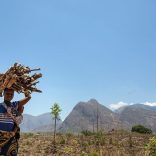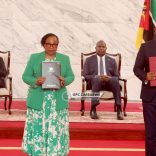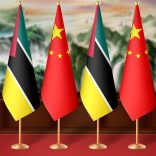Mozambique: Only 3% of available carbon credits issued
Mozambique: More funding urgent to plug ‘critical gaps’ in humanitarian aid – UN

File photo: Yana Paskova/Reuters
The United Nations has warned of “critical gaps” in various humanitarian sectors in Mozambique and pointed to the urgent need for additional resources to ensure a multisectoral response in the country.
According to a report by the United Nations Office for the Coordination of Humanitarian Affairs (OCHA), to which Lusa had access on Friday, around 4.9 million Mozambicans are currently facing high levels of acute food insecurity due to climatic phenomena associated with El Niño.
“In response to the drought induced by El Niño, a drought appeal was launched in September to address urgent humanitarian needs in the most severely affected districts. The appeal identified three million people in need of immediate assistance in drought-affected areas,” said the United Nations agency, adding that around 1.4 million people are targeted for humanitarian aid from that organisation.
According to OCHA, in April there were still significant gaps in the humanitarian response in the country, where around 35% of the 1.4 million people targeted for aid had been reached.
“Progress in specific sectors also reflects these gaps,” the report explains, adding that of the 1.4 million people “targeted,” the Food Security and Livelihoods cluster “reached approximately 36%, the Nutrition cluster 14%, the Hygiene cluster 4%, while the Protection cluster reached less than 0.1%”.
According to the agency, these figures highlight “critical gaps” in several life-saving sectors and underscore the “urgent” need for additional resources to ensure a coordinated multisectoral response.
“The appeal against drought remains severely underfunded. As of April, US$29 million [€25.2 million] had been secured – or 13% of the US$222 million [€193 million] needed,” it added.
Mozambique’s President Daniel Chapo on Tuesday called for immediate and joint action among African countries to halt the “growing” threat of drought and the “relentless” advance of desertification on the continent.
“Southern African countries such as Zimbabwe, Zambia, Malawi, Mozambique and South Africa frequently face severe droughts induced by the El Niño phenomenon. Paradoxically, countries in the Horn of Africa — such as Ethiopia, Somalia and Kenya — have been facing severe droughts for years, where the ‘La Niña’ phenomenon occurs,” he explained.
According to Chapo, El Niño, which hit the continent between 2023 and 2024, caused one of the “most severe” droughts in recent decades in Southern Africa: “More than 30 million people across the region were affected, facing acute hunger, malnutrition and growing humanitarian needs.”
Mozambique is considered one of the countries most severely affected by global climate change, facing cyclical floods and tropical cyclones during the rainy season, but also prolonged periods of severe drought.
Between December and March alone, the country was hit by three cyclones, which, in addition to destroying thousands of homes and infrastructure, caused around 175 deaths in the north and centre of the country.
Extreme events caused at least 1,016 deaths in Mozambique between 2019–2023, affecting around 4.9 million people, according to data from the National Statistics Institute.












Leave a Reply
Be the First to Comment!
You must be logged in to post a comment.
You must be logged in to post a comment.